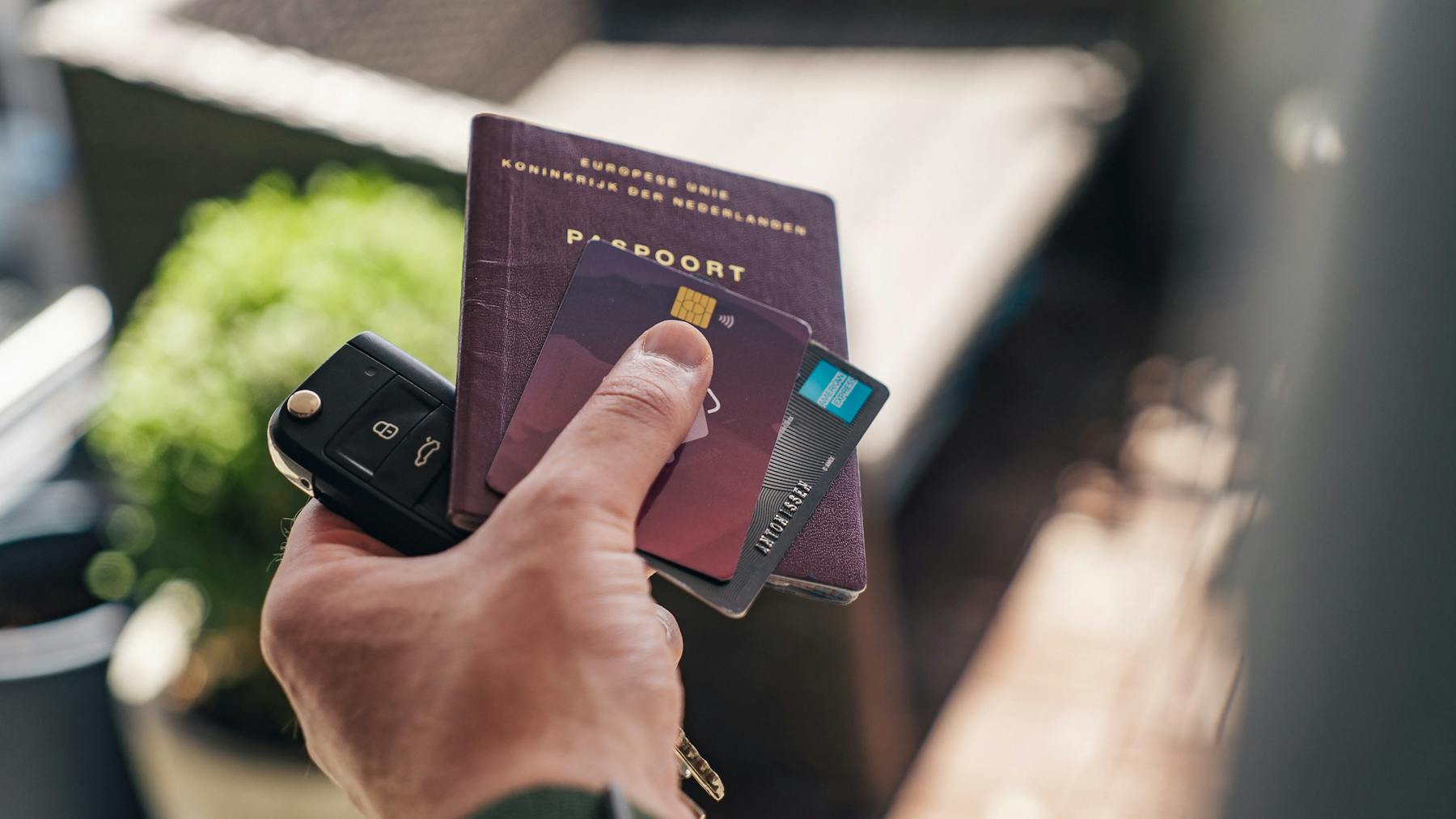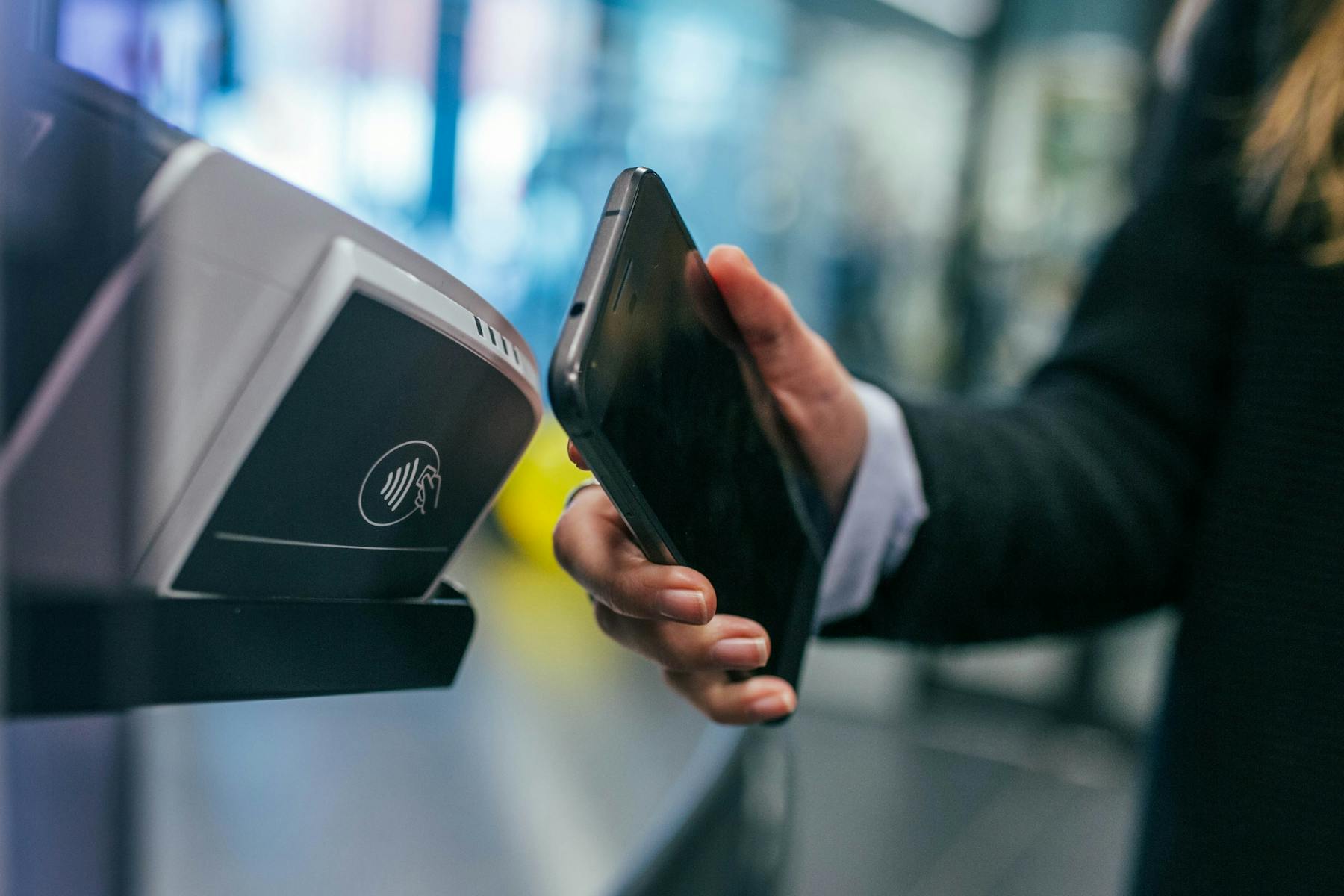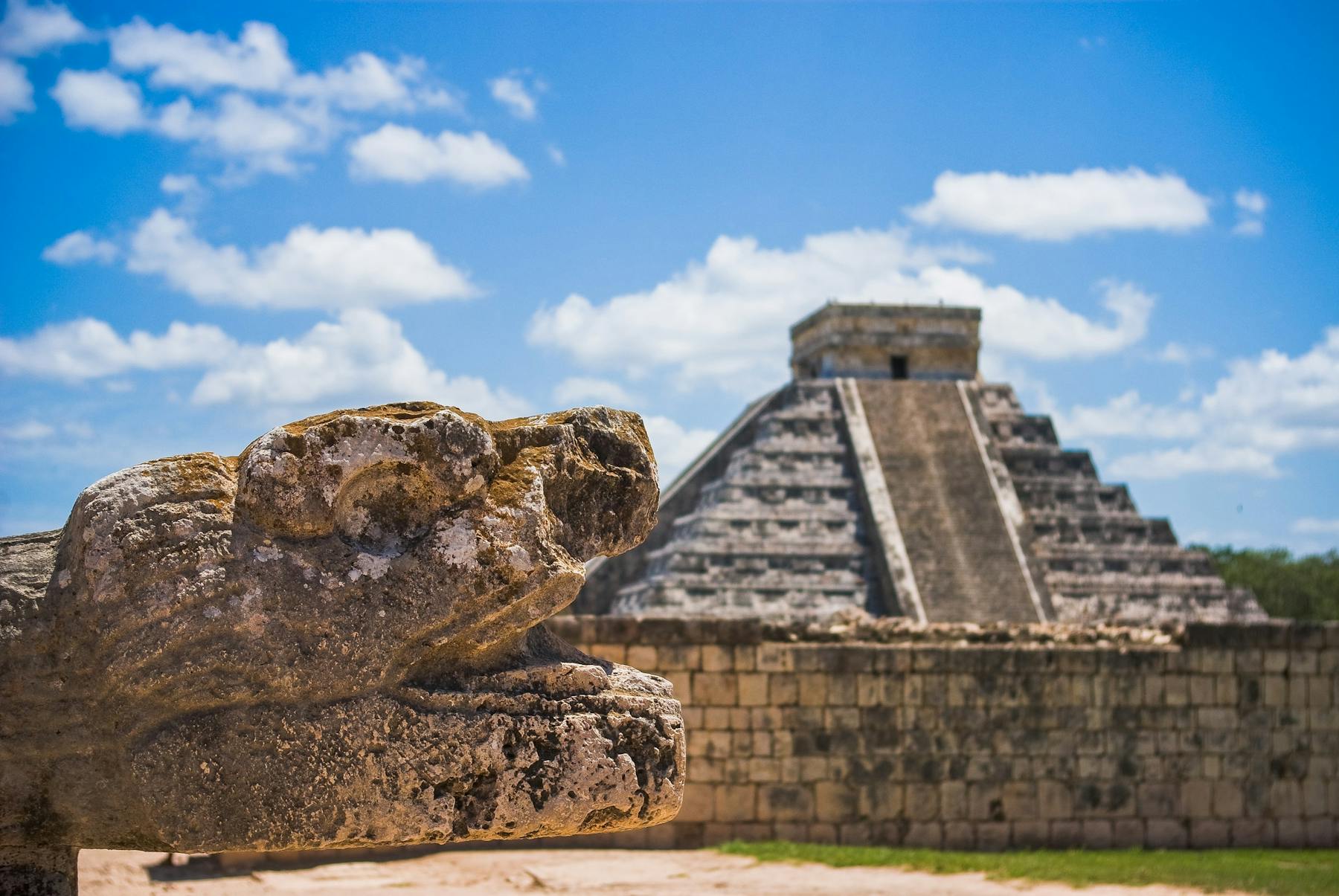 Johny Goerend
Johny Goerend What’s the Best Currency to Take to Norway? All About Currency in Norway for Travellers in 2024
.jpg?auto=compress,format&rect=0,0,1629,1629&w=120&h=120)
Byron Mühlberg
Guide
.jpg?auto=compress,format&rect=0,0,1629,1629&w=120&h=120)
Monito's Managing Editor, Byron has spent several years writing extensively about financial- and migration-related topics.
Links on this page, including products and brands featured on ‘Sponsored’ content, may earn us an affiliate commission. This does not affect the opinions and recommendations of our editors.
Read moreAre you travelling to Norway soon and wondering which currency you should take there? Curious whether you should take British pounds or US dollars along with you or whether it's best to buy the local currency at the airport? Then this short guide is for you!
Norway uses the Norwegian krone as its currency, meaning that, except in tourist establishments, airports, or hotels, you normally won't be able to use your home currency to pay your way, even if it's a popular tourist currency like the British pound or the euro.
As we'll see, to pay while you're visiting Norway, you'll either need to buy krone banknotes before or during your trip, use your ordinary credit or debit card, or (cheapest of all) use a savvy multi-currency debit card like Revolut's or Wise's travel debit cards.
In a rush? Here are our recommendations for how to pay in Norway if you're...
- from the UK: Revolut
- from the USA: Chime's VISA debit card
- from Canada: KOHO's debit Mastercard
- from the EU, Australia, or Singapore: Revolut
- wanting krone banknotes: ChangeGroup
In this short guide, we'll discuss what's the best currency to take to Norway, how you should pay when you're there, and what your cheapest options are to avoid paying hefty exchange rate charges.
Key Facts About Norwegian Currency for Travellers
| 💹 Currency in Norway | Norwegian krone |
|---|---|
| 💲Currency Symbol | kr or NOK |
| 🔠 Currency ISO-3 Code | NOK |
| 💵 Banknote Denominations | kr 50, kr 100, kr 200, kr 500, kr 1,000 |
| 🪙 Minor Unit | Øre |
| 💳 Ways to Pay in Norway | Debit/Credit Card, Google Pay, Apple Pay |
| 💷 Best Travel Card From the UK | |
| 💶 Best Travel Card From the EU | |
| 💵 Best Travel Card From the USA | |
| 💵 Best Travel Card From Canada | |
| 💴 Best Travel Card From Australia | |
| ⚕️ Best Travel Insurer | |
| ✈ Best Flight Aggregator | |
| 💬 Best App to Learn Norwegian |
Best Currency to Take to Norway
Overview of Currency in Norway
Kjell Jøran Hansen, CC BY NC SA 2.0

As we saw earlier, the currency in Norway is the Norwegian krone.
As the official legal tender in Norway, it's the sole currency recognized by the Norwegian government, and you can use it to settle all financial obligations in the country, from paying for your hotel stay, to the entrance fee at the Viking Ship Museum, to a bite to eat in Stavanger.
Note that if you plan to buy a large sum of krone banknotes and you end up bringing them home unused with you after your holiday, you'll probably get a bad deal on the exchange rate by swapping kroner as back into your home currency since most banks and exchange offices mark up the krone more than usual, partially to account for its inflation. This means that if you buy krone banknotes, you should try to budget carefully to avoid bringing any home.
You can learn more about the Norwegian krone currency here.
Best Currency to Take to Norway
Vidar Nordli-Mathisen

Because it's the local currency and because you won't have any trouble buying goods with it, the best country to have on hand and spend while visiting Norway is, unsurprisingly, the Norwegian krone.
However, if you arrive in Norway with another currency on hand, it doesn't necessarily mean you won't be allowed to pay in Norway. Especially if you're carrying a popular tourist currency like the pound sterling, the euro, or the US dollar, you'll find it easy to exchange them for kroner at banks or currency exchange offices across Norway — even if those currencies aren't official or used commercially in Norway.
You can check out the prevalence of a few of the most popular tourist currencies in Norway below:
British pounds in Norway
British pounds aren't accepted at all in Norway, and merchants and commercial establishments (even those in touristy areas) will only accepts payment in kroner. If you're from the UK, we recommend using Revolut's travel debit card, which has market-low currency exchange charges.
US dollars in Norway
US dollars aren't accepted at all in Norway, and merchants and commercial establishments (even those in touristy areas) will only accepts payment in kroner. If you're from the USA, we recommend using Chime's debit card, which charges no foreign exchange fees, to make low-cost card payments while travelling in Norway. However, out-of-network ATM withdrawal fees and over-the-counter advance fees may apply.
Euros in Norway
Despite the proximity of the Eurozone, euros aren't accepted at all in Norway, and merchants and commercial establishments (even those in touristy areas) will only accepts payment in kroner. If you're from the European Union or EEA, we recommend using Revolut's or N26's debit cards, both of which charge no foreign exchange fees, to make low-cost card payments while travelling in Norway.
Canadian dollars in Norway
Canadian dollars are easily converted for krone banknotes in Istanbul and other major tourist centres, but they'll not be accepted if you try to buy something. Exchanging Canadian dollars for kroner is typically slightly more expensive than exchanging US dollars or pounds. We recommend checking out KOHO's debit card for international travel. KOHO charges zero foreign currency transactions abroad on the Extra or Everything plan, which beats most credit cards and other debit cards in Canada.
Although the Norwegian krone is the best currency to use and other tourist currencies can be easily exchanged, exchanging currencies in the form of cash almost invariably leads to poor exchange rates for tourists (we've seen as high as 20% commissions, although the average is between 5% and 15% of the amount exchanged). Over and above that, Norway is a largely cashless society, meaning cash isn't always accepted while card payments are universal.
For these reasons, it's a much better idea to use your credit or debit card to pay at local points of sale wherever possible or (if cash is urgently needed — which can happen in Norway) to withdraw some money from a local ATM. This will let your card provider handle the conversion, which is usually, although not always, a better deal than bringing foreign currency into Norway and exchanging it there. However, as we'll see below, a conversion-friendly debit card is the best choice of all!
ChangeGroup
ChangeGroup is a reliable option if you need physical Norwegian krone in cash on hand before your flight abroad to Norway. Although it's generally more affordable than exchange offices in Istanbul for buying krone banknotes, it's still quite pricey compared to using your card, hovering around 15%. This is why we tend to recommend Revolut and Wise for spending in Norway.
- FX Margin to Krone: 10% - 16%
- Home Delivery: For a fee
- Cash Pick Up: Free
- Guaranteed Buyback: For a fee
- Availability: UK, USA, Australia, Germany, France, Austria, Spain, Denmark, Sweden, Finland
How to Pay in Norway
Simon Williams

When it comes to paying your way in Norway, you'll have the following three options broadly speaking:
Method 1: Cash
Norway is an almost completely cashless society, with fewer than 2% of the country's retail transactions taking place in cash. As a result, if you don't have any kroner banknotes during your trip, if anything, that'll be an advantage, seeing how some establishments don't even accept cash at all. Still, there might be occasions where having some cash on hand for tipping or emergencies can be useful (or if you just want to just collect kroner banknotes as a souvenir before they get phased out altogether!).
Note that in Norway, currency exchange offices normally go by the name vekslingskontor, so if you want to exchange your home currency for Norwegian krone, be on the lookout for signage with this name.
- Cash Prevalence in Norway: Not prevalent
- Cost to Exchange: 5% - 20% on average
Method 2: Credit Card
Of course, because Norway is a largely cashless society, credit and debit cards issued by major global providers like VISA and Mastercard are commonly accepted%CASH_LEAD_IN_CLOSE%. If your card is issued by American Express, Diner's Club, or another card company, there's a good chance they'll also be accepted in Norway, but we recommend checking with your bank or card provider directly to make sure that Norwegian krone currency conversion is indeed supported, and that card machines and ATMs in Norway commonly support cards of this type.
- Card Prevalence in Norway: Prevalent
- Cost to Exchange: 2% - 5% on average
Method 3: Travel Debit Card
Just like credit cards, prepaid debit cards (which are also normally issued by VISA or Mastercard) provide an excellent way to pay while visiting Norway, the main difference being that you normally pay lower fees and exchange rates. Depending on where you live, you'll probably have options from your bank or a third-party provider to use a commission-free debit card or a multi-currency card which can help you dodge high Norwegian krone conversion costs, including DCCs.
According to our analysis of dozens of providers, the top two options for travelling to Norway, in general, are the following:
Revolut
Revolut is an excellent option for paying in Norway. Its all-in-one mobile finance app and debit card offer competitive exchange rates to the Norwegian krone and low fees. Moreover, you can easily manage everything through your money through Revolut's user-friendly app.
- Monthly fee: $0
- Card type: Mastercard debit
- Card payment cost in Norwegian krone: 0.5% - 1.5%
- Cash withdrawal fee: 0% - 2%
- Norwegian krone balance: Yes
- Norwegian krone bank details: No
Wise Account
The Wise Account is another great option for paying in Norwegian krone. It gives you the lowest possible currency exchange rates with complete transparency and no hidden fees. It also allows you to hold and manage over 50 currencies in one account and provides fast and secure cross-border money transfers at a fraction of the cost of traditional banks.
- Monthly fee: $0
- Card type: VISA debit
- Card payment cost in Norwegian krone: 0.5% - 1.5%
- Cash withdrawal fee: 0% - 2%
- Norwegian krone balance: Yes
- Norwegian krone bank details: No
Wise and Revolut are excellent options that are available in many countries around the world. However, depending on where you live, you might have access to better deals still. We go over a few of them below:
United Kingdom
United States
- Chime®: Best all around; no fees for non-USD transactions.
- Revolut: Best all-around spending app.
- Wise: Best for foreign currency spending and holidays.
Canada
- KOHO: No foreign transactions on Extra or Everything plan.
- Wise: Best for foreign currency spending and holidays.
European Union
FAQ About Currency in Norway
What's the best currency to take to Norway?
The best currency to take to Norway is the local currency, the Norwegian krone. US dollars are also highly exchangeable at local banks and currency exchange offices. However, instead of converting physical banknotes, the cheapest way to pay in Norway is to use a multi-currency travel debit card like Revolut or Wise.
Should I exchange my currency before traveling to Norway?
Generally, we don't recommend exchanging currency before travelling to Norway. Although having some Norwegian krone cash on hand can be helpful, we recommend drawing some from an ATM once you've arrived in Norway using a prepaid multi-currency card like Revolut to avoid the hidden currency exchange fees.
Is it better to use credit cards or cash when traveling abroad?
It depends on the country you're visiting and the expenses you will have. Credit cards are widely accepted in many countries, including Norway, and can offer benefits such as rewards points and fraud protection. However, some places may only accept cash, especially in more rural areas. It's a good idea to have both cash and credit cards on hand and to research the best way to access your money while travelling.
How do I avoid exchange fees when traveling to Norway?
The best way to avoid currency exchange fees when travelling to Norway is to pay using a multi-currency travel debit card like Revolut or Wise. This way, you can make low-cost conversions to the Norwegian krone every time you tap your card or withdraw cash. Other excellent debit cards that don't charge conversion fees include Revolut in the UK and Chime in the US.
Take a Look at These Related Guides







Travelling to Another Country Too?
Take a look at the best currencies to take to other countries:
Why Trust Monito?
You’re probably all too familiar with the often outrageous cost of sending money abroad. After facing this frustration themselves back in 2013, co-founders François, Laurent, and Pascal launched a real-time comparison engine to compare the best money transfer services across the globe. Today, Monito’s award-winning comparisons, reviews, and guides are trusted by around 8 million people each year and our recommendations are backed by millions of pricing data points and dozens of expert tests — all allowing you to make the savviest decisions with confidence.
Monito is trusted by 15+ million users across the globe.
Monito's experts spend hours researching and testing services so that you don't have to.
Our recommendations are always unbiased and independent.

